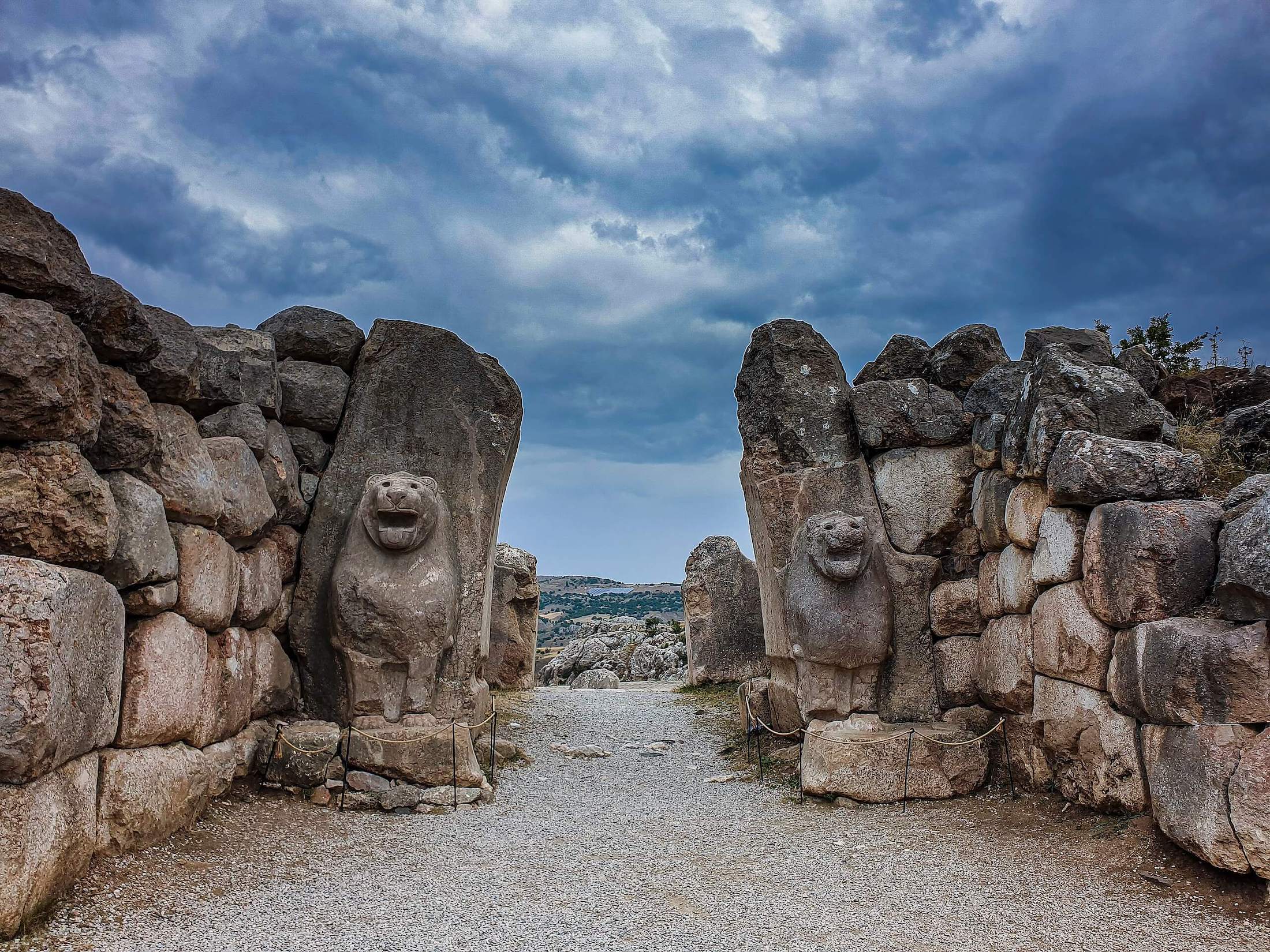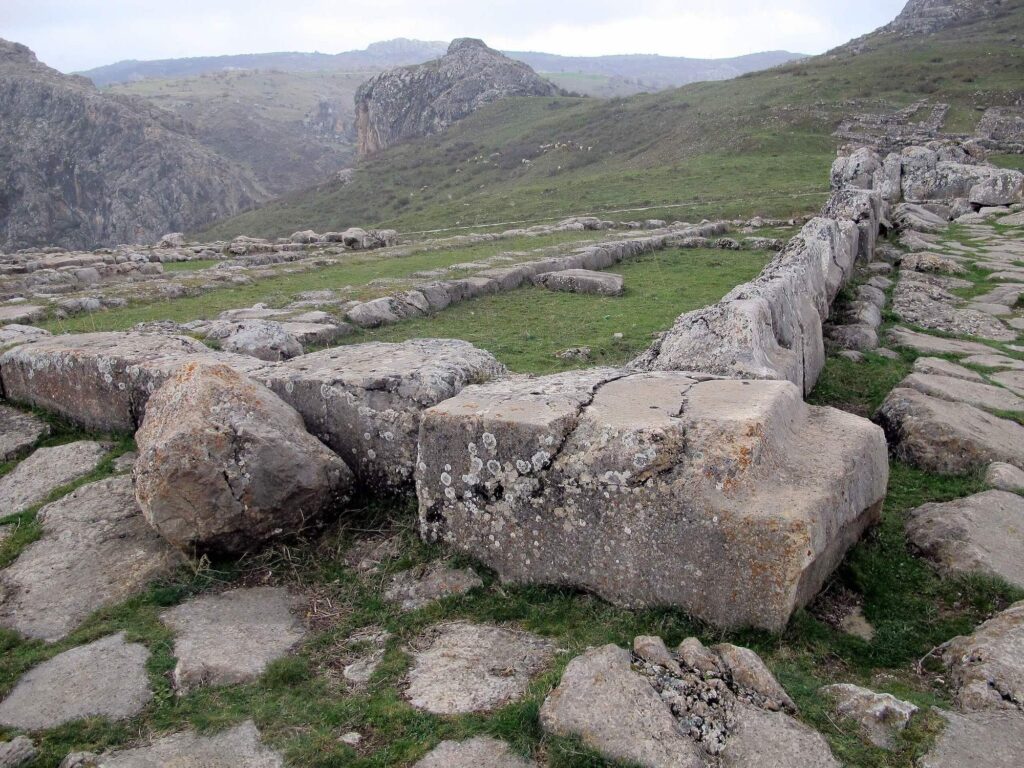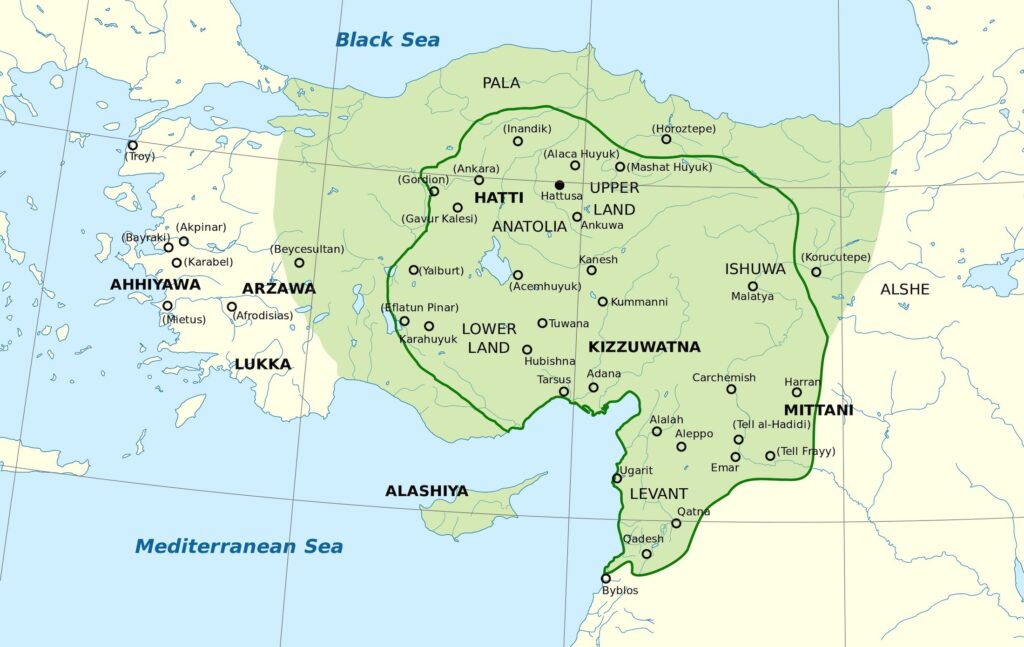
Tree Rings, Drought, and the Collapse of the Hittite Empire
February 2023 | Vol. 11.2
By Eric Cline
The recent Nature study about drought and the fall of the Hittite Empire doesn’t just make for good headlines, it adds to our knowledge about the Late Bronze Age Collapse in fresh ways.
In an article recently published in the journal Nature, Sturt Manning and colleagues presented new data related to a drought that coincided with the collapse of the Hittite Empire in the early 12th century BCE. The authors analyzed tree rings and stable isotope records from contemporary juniper trees in central Anatolia. The study has received a lot of media coverage thanks to the public’s thirst for apocalypse and climate-disaster stories. Beyond the sensationalist headlines, it is worth reflecting on the importance of this new research, as it adds to our knowledge about the Late Bronze Collapse in fresh ways.

Remains of the Lower City of Hattusa, capital of the Hittite Kingdom, built in the 14th cent. and destroyed in the early 12th cent. BCE (Murat Özsoy / Wikimedia Commons, CC-BY-SA)
Overall, not only is the quantity of scientific data increasing, but also the different sources for that data. For instance, in just the last two decades, the proxy data attesting to a drought ca. 1200 BCE have come from a variety of different studies. These include pollen analyses, stable isotope analyses, and oxygen isotope analyses, among other studies, coming from lake sediments, cave stalagmites, dried-up riverbeds and lagoons, and so on, in regions stretching from Italy and Greece to Turkey, Syria, Lebanon, Israel, and Iran.
However, to my knowledge, this new study represents the first time that we have evidence coming from the remains of trees, specifically juniper trees, using dendrochronology as well as stable isotope analysis. What is particularly exciting is the specificity of the dating from this study, in addition to the fact that it is substantiating and corroborating our hypotheses as to what led to the Collapse of the Late Bronze Age.

Extent of the Hittite Empire in the Late Bronze Age (Iconact / Wikimedia Commons)
This complements what Kaniewski and his team did in northern Syria and Cyprus, as well as the studies that Langgut, Finkelstein, and Litt did in Israel. All of their data came from pollen samples, while this study is utilizing dendrochronology and juniper trees, but they are essentially documenting the same thing. To my mind, this is extremely important because the new data give us yet another angle, and everything is still pointing to the same conclusion: drought.
Droughts lasting a single year were apparently by no means uncommon during the Bronze Age, and one could literally weather such a one-time event, but a drought that lasted three years in a row would be much more difficult to survive, especially if one were reduced to eating the seed meant for planting in future years, and if no other major power were able to come to the rescue with humanitarian missions. We also have textual evidence, from both the Hittites and elsewhere, including at Ugarit in north Syria, in which the ancient letter writers specifically say that there is famine in their lands, which would imply that there had been multi-year droughts such as the one now documented by this new study.
Of course, drought was just one of the numerous problems that the Hittites and others were facing at that time. There was a cacophony of catastrophes that led not only to the collapse of the Hittite Empire, but also to the collapse of other powers as well, and which brought down the international trade network that linked them all. These include climate change, which led in turn to drought, famine, and migration; earthquakes, invasions, and internal rebellions; systems collapse; and quite possibly disease as well (details for these can be found in my book, 1177 B.C.). All probably contributed to the “perfect storm” of calamities that brought this age to an end, especially if they happened in rapid succession one after the other, leading to domino and multiplier effects and to a catastrophic failure of the entire networked system.
But of all those factors, I would agree that drought probably was the principal driving force behind many of the problems that the Late Bronze Age societies faced, which is why the additional data from this new study is so important, including the fact that their evidence for a drought specifically in 1198-96 BCE fits well within the general scenario of the Collapse.
Eric Cline is Professor of Classical and Ancient Near Eastern Studies and Anthropology at George Washington University. He is the author of 1177 B.C.: The Year Civilization Collapsed (Princeton), which he recently updated and revised with new data in 2021. The sequel, After 1177 B.C.: The Survival of Civilizations, will be released in 2024.
How to cite this article
Cline, E. 2023. “Tree Rings, Drought, and the Collapse of the Hittite Empire.” The Ancient Near East Today 11.2. Accessed at: https://anetoday.org/cline-tree-rings-drought-hittite/.
Want to learn more?

A Failed Coup: The Assassination of Sennacherib and the Assyrian Civil War of 681 BC

The Amorites: Rethinking Approaches to Corporate Identity in Antiquity




Post a comment